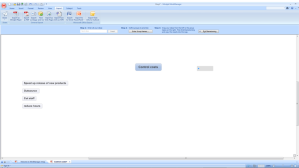Using the Tools in Your Performance Excellence Toolbox: Part 8 Brainstorming
This is the eighth in a series of posts on using performance excellence tools. It covers the basics of brainstorming.
Brainstorming is a very effective tool when used properly and a disaster when used inappropriately or incorrectly.
Too often people say, “let’s brainstorm” this or that. What they really do is convene a bull session, a gripe session or a bitch session. They think that by venting their spleen they are being creative.
A true brainstorming session is none of the above and in fact if any of these creep into your brainstorming session, you have killed its effectiveness. Appropriate uses of brainstorming include:
- Identifying a wide range of ideas and solutions to existing or new problems
- Creating group ownership of ideas
- Improving group cohesiveness
All you need to do proper brainstorming are:
- People
- A means to capture their thoughts
- The rules for brainstorming
The first thing is that it takes two or more to brainstorm. Or does it? You can sit down by yourself with a piece of paper and let a stream of consciousness flow. Write down what ever flows into your head the second it occurs to you. Don’t think about it, don’t analyze it, just write it down.
When used in a team environment, brainstorming provides your team with several options to gain the most out of their expertise while balancing team member contributions.
To capture the thoughts of a team a flip chart or whiteboard will do. You need to be able to show all the participants what has been captured. If you want there are software tools that can help. I use Mindjet’s MindManager. Figure 1 shows a screen shot of their brainstorming tool from version 8.
Figure 1 Mindjet MindManager Brainstorming Tool
The last item is what keeps you brainstorming and not kibitzing – the basic rules.
- Quantity, not quality is the goal so extreme ideas are welcome. Think outside the box. There are no bad ideas.
- No verbal or non-verbal criticism of ideas.
- No discussion of ideas. An idea is offered and no one should be allowed to comment on it, either pro or con.
- Asking for clarification is OK, but should be focused and brief. While there is no discussion of the idea, it is alright to ask for clarification of the idea.
- No belaboring ideas or telling of war stories (be succinct).
- Piggy backing on ideas is OK. If someone’s comment triggers an idea related to it offer the idea.
- Everyone gets a chance to contribute.
When you are stuck trying to get thoughts generated, try brainstorming in the round. You start by having a member offer an idea. Then proceed to the next person who offers an idea, continuing in order around the room until everyone has offered all their ideas.
- It is OK for you to say pass if you don’t have an idea when it is your turn.
- Please do not offer ideas out of turn.
- Don’t forget those in remote locations. Connect to them remotely. A neat trick that I learned to help remember remote people are out there is to treat the speakerphone as if it were actually that person is sitting at the table. As you go around the room, and get to where the phone is call on that person for his input.

2 thoughts on “Using the Tools in Your Performance Excellence Toolbox: Part 8 Brainstorming”